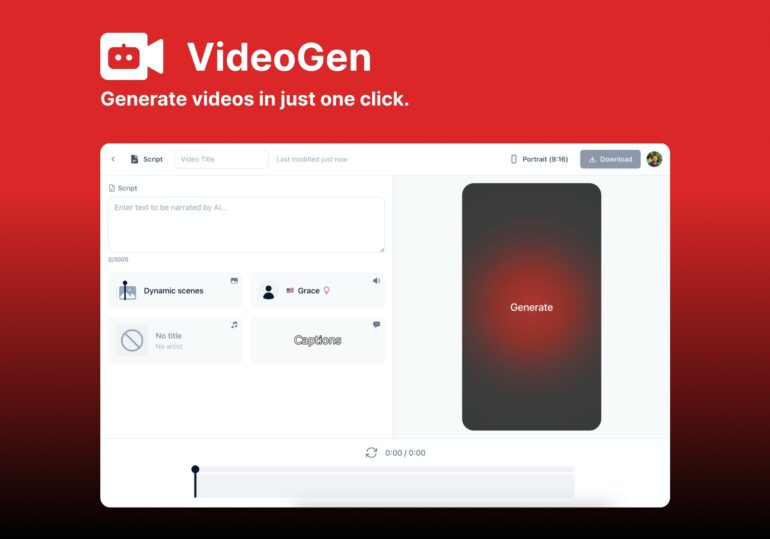TL;DR:
- Baidu introduced VideoGen, a Text-to-Video Generation approach.
- It creates high-definition videos with exceptional frame fidelity.
- Overcoming the challenges of Text-to-Video (T2V) generation.
- Utilizes a T2I model to generate a reference image.
- Employs a cascaded latent video diffusion module for fluid motion.
- Enhances visual quality and efficiency during training.
- Trains video decoder on a diverse dataset, improving motion realism.
- Significantly outperforms previous T2V methods in quality and quantity.
Main AI News:
Baidu AI Researchers have unveiled a groundbreaking innovation that promises to reshape the realm of multimedia content creation. Enter VideoGen, a cutting-edge Text-to-Video Generation approach that sets a new benchmark for generating high-definition videos with impeccable frame fidelity.
While Text-to-Image (T2I) generation systems like DALL-E2, Imagen, Cogview, and Latent Diffusion have made remarkable strides, the challenge of Text-to-Video (T2V) generation has loomed large. This hurdle stems from the demand for top-notch visual content and the need for temporally smooth, true-to-life motion aligned with textual descriptions. To exacerbate matters, acquiring extensive databases of text-video combinations has proven to be a formidable task.
Baidu Inc.’s recent research introduces VideoGen as a formidable solution to this conundrum. The methodology behind VideoGen leverages a multi-step process to craft seamless movies from textual narratives. It all begins with the creation of a high-quality reference image, accomplished through a T2I model. Subsequently, a cascaded latent video diffusion module enters the scene, generating a sequence of high-resolution, fluid latent representations, harnessing the power of the reference image and textual input. When necessary, a flow-based approach is employed to upscale the latent representation sequence in temporal dimensions. Ultimately, a video decoder is trained to transform this sequence of latent representations into a tangible, visually captivating video.
The strategic incorporation of a T2I model to generate the reference image offers two distinct advantages. Firstly, it elevates the visual quality of the resulting video, capitalizing on the vast dataset of image-text pairs, which is renowned for its diversity and information richness. Compared to alternatives like Imagen Video, which relies solely on image-text pairings for joint training, this method boasts superior efficiency during the training phase. Secondly, the cascaded latent video diffusion model’s ability to be guided by a reference image enables it to grasp the intricacies of video dynamics, a capability that sets it apart from approaches that solely rely on T2I model parameters.
Notably, the researchers emphasize that textual descriptions are not obligatory for the video decoder to craft a cinematic masterpiece from the latent representation sequence. This innovative approach allows the video decoder to be trained on a broader data spectrum, encompassing both video-text pairs and unlabeled (unpaired) films. As a result, this method significantly enhances the fluidity and authenticity of the generated video’s motion, thanks to the incorporation of high-quality video data.
In terms of both qualitative and quantitative evaluations, the findings unequivocally assert that VideoGen represents a monumental leap forward in the domain of text-to-video generation. This breakthrough promises to reshape the landscape of multimedia content creation and unlock a realm of possibilities for businesses and creators alike.
Conclusion:
Baidu’s VideoGen innovation signifies a groundbreaking leap in multimedia content creation. By conquering the hurdles of Text-to-Video generation, it introduces a new era of high-definition video production with remarkable frame fidelity. This advancement not only elevates visual quality and efficiency but also enhances motion realism, offering substantial potential for the multimedia content market. Businesses and creators can harness this technology to create richer and more immersive video content, redefining the industry landscape.

